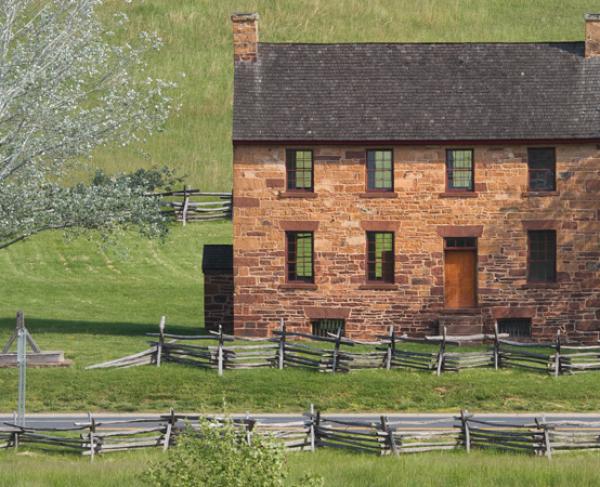Alexandria National Cemetery
Virginia
1450 Wilkes Street
Alexandria, VA 22314
United States
Alexandria National Cemetery is located near the Old Town section of Alexandria, Va., amid several other community cemeteries. The original cemetery consisted of approximately four acres known as Spring Garden Farm. Most of this land was acquired by the United States in the 1860s, and by November 1870 the cemetery had reached its current size of a little over five acres.
Alexandria was one of the principal campsites for Union soldiers sent to defend Washington, D.C., at the outbreak of the Civil War. These troops, composed primarily of "three-month volunteers, " were unprepared for the demands of war. When they tried to turn the Southern advance at Bull Run, they were decisively defeated and hastily retreated back to Washington. At one point in the war, General Robert E. Lee and his Southern troops rode the outskirts of Alexandria where they were close enough to view the Capital dome. As the tide of the war turned, especially after Gettysburg, the frontlines of the war moved west and away from Washington, D.C. The fortress area at Alexandria, however, continued to serve as a major supply and replacement center throughout the remainder of the war.
Alexandria National Cemetery is one of the original 14 national cemeteries established in 1862. The first burials made in the cemetery were soldiers who died during training or from disease in the numerous hospitals around Alexandria. By 1864, the cemetery was nearly filled to capacity, which eventually led to the planning, development and construction of Arlington National Cemetery.
As of 1871, Alexandria National Cemetery encompassed a cobblestone avenue, a fountain, an ornate wrought-iron rostrum, graveled walks and paths, a small pond and a greenhouse. Today, the superintendent's lodge is the primary building on the grounds and the oldest surviving structure. It was constructed of reddish Seneca sandstone and brick around 1870. Seneca sandstone was popular during Washington, D.C.'s, "brownstone era" (1840-1880), and can be found in many of the region's prominent buildings, including the Smithsonian Institution "Castle, " and the U.S. Capitol floor and rotunda door frames. U.S. Quartermaster General Montgomery C. Meigs designed the lodge in a Second French Empire style; approximately 55 of these lodges were constructed in national cemeteries between 1870 and the end of the century.
The original 1887 "comfort station" at Alexandria was converted into a kitchen/store room and tool shed/toilet when a brick summer dining room was added in 1927. Although significantly altered, the old comfort station is one of few structures like these to survive. The 16-foot ornamental iron rostrum with a capacity to hold 24 chairs and one table was demolished sometime after 1931. An enclosure wall constructed of Seneca sandstone with River Blue Stone coping surrounds the property; visitors pass through 12-foot wide ornamental cast-iron entry gates at the Wilkes Street entrance.
During the 1930s, the Civilian Works Administration (CWA) made general repairs to the lodge and outbuildings and erected a new flagpole. Alexandria National Cemetery was listed in the National Register of Historic Places in 1995. One large granite boulder memorial was erected by the U.S. government on July 7, 1922, in honor of the Pursuers of President Lincoln's Assassin. The four men were Quartermaster Corps employees who drowned in the Potomac River on April 24, 1865, while pursuing John Wilkes Booth.




